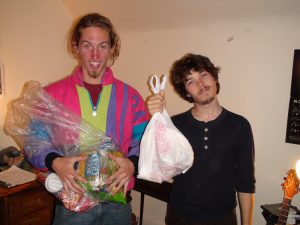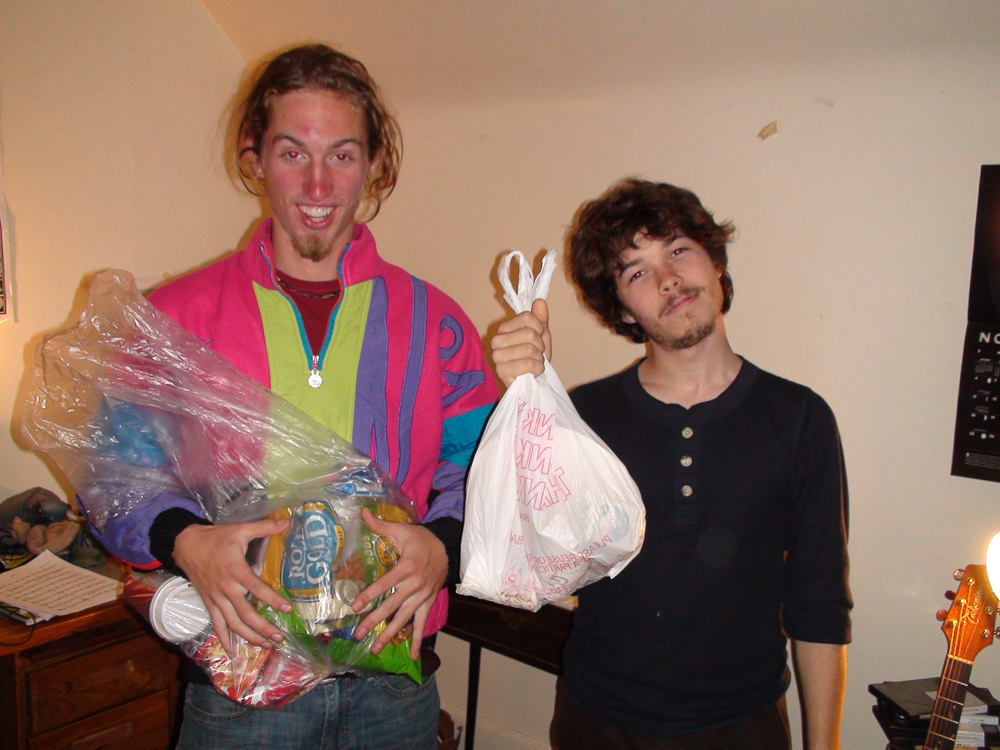
By Rachel Vinciguerra
Transcript Correspondent
Junior Aidan Williamson challenged Ohio Wesleyan students to carry all of their waste products in a trash bag everywhere they went last week in order to confront their ecological footprint.
As a member of the Tree House, a Small Living Unit (SLU), Williamson is required to complete a project every semester that relates back to the theme of the Tree House and is open to members of the OWU community.
“No Throw-Away Week is a project aimed at acquainting its participants with the size of their waste stream,” Williamson said.
According to the Tree House blog (treehouseowu.blogspot.com), Williamson was inspired by the book, “Radical Simplicity” by Jim Merkel. The book serves as a guide for people concerned about their ecological footprint and how much of the earth’s ecosystems they use.
Williamson said that he considers reducing the amount of non-recyclable, non-compostable material that is deposited in landfills to be the second most important aspect of reducing your ecological footprint, after dietary changes.
“My goal with this project is to encourage thinking about our trash and how our lifestyles create our trash,” Williamson said. “I want more people to be critical of every item they decide to take responsibility for, to ask themselves whether they really need to buy or consume all the things they do.”
Some members of the Tree House, a few students from outside of the SLU community, and a professor took part in this project.
Over the course of the week, each participant was asked to carry a trash bag with them at all times to deposit their waste into. At the end of the week they weighed their trash and found out just how much they would have thrown away.
Williamson said the feedback has been mostly positive.
“Dr. Shari Stone-Mediatore in the philosophy department was very keen on this project and has been wonderful to talk to thus far. She was telling me that most of her trash so far has been facial tissues. When I told her that she could compost those, I could tell it was the best news she had heard all week,” he said.
Williamson said the best part of his project has been that it makes him critical of his own consumption. The worst part for Williamson has been forgetting to put trash into his bag.
“A few times I have had to fish something out of a trash can after accidentally tossing it,” Williamson said.
One student said she was interested in the project when she first heard about it, but decided not to participate in the end.
“It was kind of gross carrying around your trash all day, but mostly it was just hard to do when I’m out of the dorm for the whole day,” she said.
Junior Ashley Taylor said that as a member of the Tree House she thought it was a great idea from the beginning, although she was worried that people outside of Tree House might not be open to it.
Since the project ended, she said she feels the same way.
“I wish more people would have been involved and showed more interest. I still like the idea that it opens your eyes to what you are throwing away if it can’t be recycled or composted.”
Taylor said the project has made her even more conscious of what she throws away.
“ I wish I could eat more things that are not packaged,” she said. “It’s so easy to just toss things into the trash–out of sight, out of mind–but it definitely made me think about the things I do throw away and where they end up. Also, as much as I do recycle and compost, it’s sad to think that I am still contributing to the pollution of the land fills.”
Senior Chris Marshall said he thought the project sounded comical at first.
“It seemed silly to imagine all of campus carrying bags of trash around,” he said.
But Marshall was curious to participate in Williamson’s project and he said it has made him think about how much waste we produce as a society.
“Say you generate just a pound of waste in a week. Expand from that small amount to the American population, 300 million strong. In a week, that’s 300 million pounds of waste, 150,000 tons. Where does that all go? To a landfill, to islands of trash hidden from view so we don’t have to think about them. Because I had to keep my trash all week, I was much more aware of what I was purchasing, trying to be careful not to add to my trash bag because I didn’t want to carry so much crap around.”
He said disappointed to see his trash bag fill so quickly throughout the week.
“The worst part was watching my waste pile build even while I was trying to limit the things I was using, eating and buying. I realized I am caught in a consumerist web,” Marshall said.
Senior Melissa Guziak also participated in Williamson’s project. She said she realized that she generates a lot of trash very easily.
“A lot of this trash could be avoided if I thought ahead with the food decisions I choose to make throughout the day,” she said.
In particular, Guziak noticed that she accumulated a lot of small plastic yogurt containers that cannot be recycled.
“Looking at the bag at the end of the week I see all of the trash and realize that’s going to sit in a landfill forever. I can get rid of the bag and get it out of my mind, but it will be sitting somewhere on our earth forever,” she said.
Senior Amanda Fawcett said the project has opened her eyes to the trash she generates every day, but she was not excited about carrying waste around with her all week.
“I did this project to support my housemate Aidan, even though I wasn’t looking forward to carrying around a trash bag with me for a week,” she said.
Fawcett was especially hesitant to carry around the plates and bowls from the Hamilton-Williams Campus Center covered in food. Despite the smells, she said, she was happy with the outcome.
“I was pleased with myself because I didn’t generate much trash apart from the unavoidable items like the disposable plates and bowls in the cafeteria. I avoided a lot of waste by carrying around a metal spoon and fork with me, which is something I did even before this week,” Fawcett said.
Marshall said he feels confident that Williamson’s project can be applied to the everyday lives of students at OWU and people everywhere.
“Aidan’s house project serves as a model for how people should consider their waste, not just for a week, but year-round,” he said.
